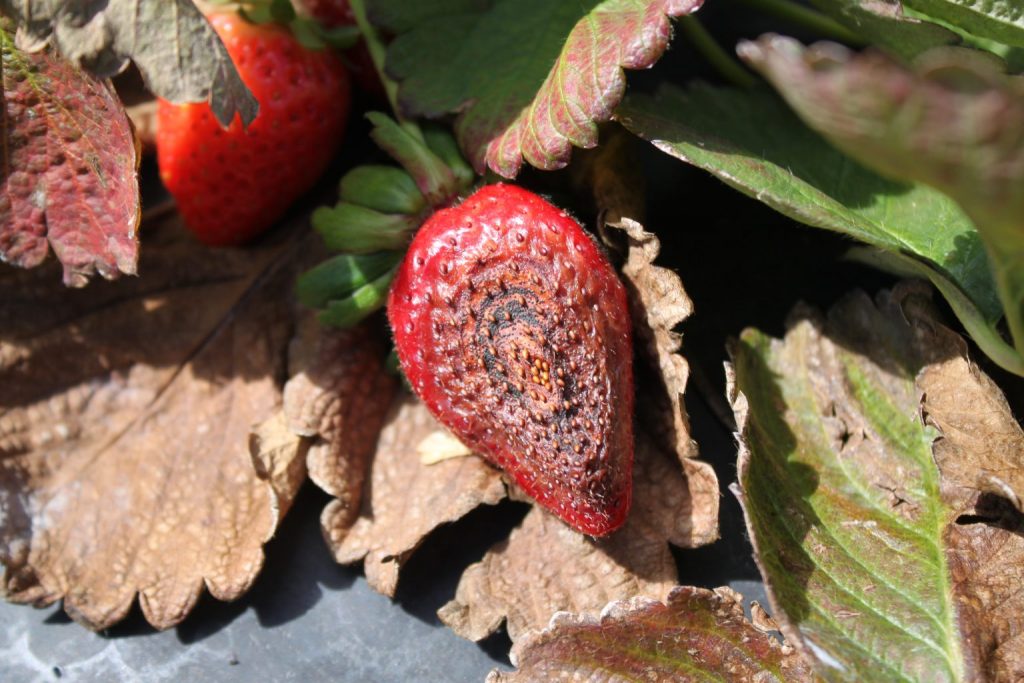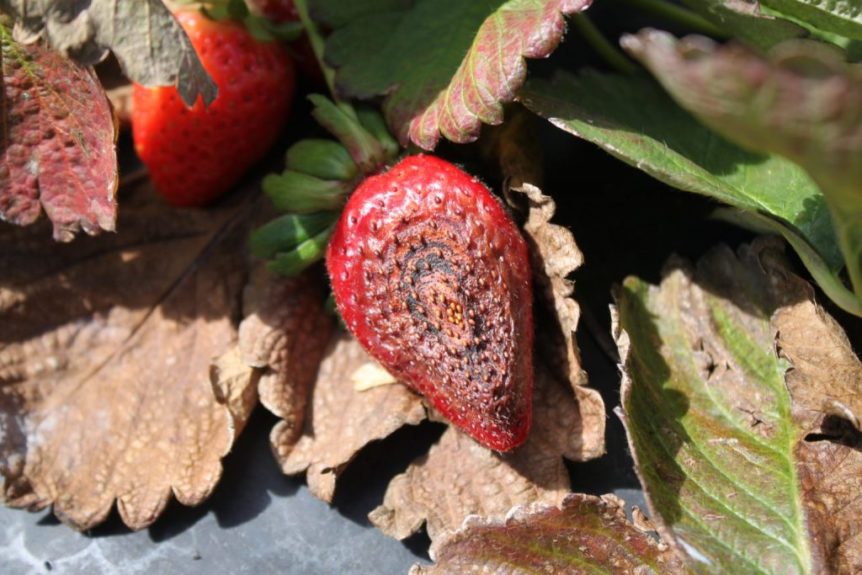Neopestalotiopsis fruit rot and leaf spot disease is already expected to impact next year’s strawberry crop. The question is how can growers minimize the potential damage the disease will likely have on plants ahead of next growing season?

Phil Brannen, University of Georgia (UGA) Cooperative Extension fruit disease specialist, outlined how producers can navigate next season’s expected increase of Neopestalotiopsis. Brannen discussed in the UGA Extension Strawberry Blog the current best management strategies for growers, other than bringing in disease-free transplants:
- Avoid planting varieties that are highly susceptible;
- Do not plant unhealthy plants and destroy the ones not planted;
- Limit field operations when plants are wet;
- Sanitize hands, shoes and clothing when moving out of infected fields;
- Clean and disinfect equipment when moving out of infected fields;
- Remove and destroy symptomatic plants during production to reduce spread;
- Incorporate “efficacious” fungicides into an ‘aggressive’ spray program

“Since finding clean plants may be difficult at this later date, producers will simply need to think about their level of risk tolerance, with some opting to skip production this year altogether,” Brannen wrote. “For those who move forward, Thiram will provide the backbone of a spray program this year. It is a contact fungicide, but it has pretty good efficacy against Neopestalotiopsis, as well as Botrytis.”
Thiram’s Future
Brannen said the Environmental Protection Agency will likely remove Thiram from the market soon, so growers need to stay up to date of potential regulations.
“Consider spraying the maximum number of applications of Thiram allowed by label (every 10 to 14 days and optimally ahead of rain events) – starting soon after transplanting but ceasing with extreme cold during the winter and continuing in the spring,” Brannen wrote. “In addition, tank mix and/or alternate the following fungicides with Thiram for the maximum number of applications allowable – Switch (five applications at 11 ounces per acre) and four applications of Rhyme or Tilt or Inspire (all of these are DMI fungicides); note that Tilt and other generics containing propiconazole should be limited to three or fewer applications, as stunting and yield reduction has been reported in Florida with this fungicide.”
For Southeast growers, that will mean 12 applications of Thiram, and nine of these applications can include a mixture of Thiram and a systemic material like Switch or DMI fungicides.
Some Thiram labels allow up to 12 applications if a farm is east of the Mississippi River.










